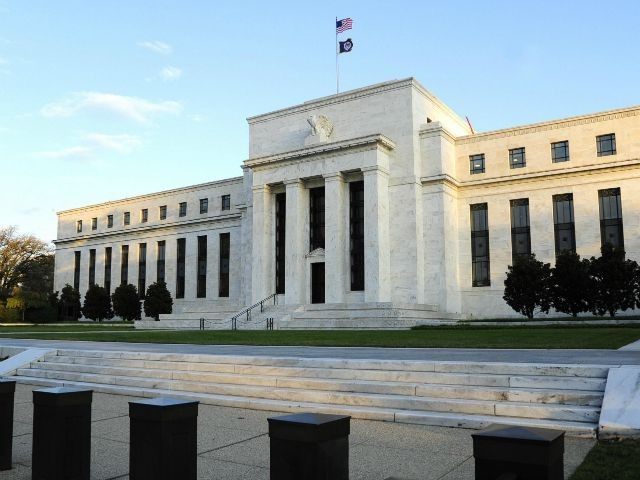Federal Reserve data reveals that its post-crash interest-rate manipulation “economic stimulus” actually stripped American savers of trillions of dollars by forcing down interest rates.
The Federal Reserve cost American savers — usually older Americans — more than $550 billion per year in lost interest-income, and will likely cost young taxpayers much more once President Barack Obama’s huge government debts have to be repaid at normal interest rates, said Seeking Alpha’s financial analyst, Peter Knight.
Banks normally pay interest on deposits close to the consumer price index. But since 2010, the deposit rate has been far below the CPI, in what amounts to the longest period of negative rate of return in U.S. history. The Federal Reserve’s “economic stimulus” was really “interest rate suppression,” said Knight.
The federal reserve’ stimulus was launched alongside Congress’s better-known 2009 spending stimulus.
Banks have never lowered their 3.25 percent prime rate of interest since 2009 and credit card rates have remained at 13.01 percent, versus their 20 year average of 14.22 percent, Knight said. During the same period, the Federal Reserve economic stimulus suppressed the interest yield on short term bank certificates of deposits to just .81 percent for one month CDs and only 1.54 percent for 5 year CDs, according to the FDIC.
“The same banks that facilitated the debt crisis after receiving trillions in Fed bailouts have enjoyed the largest gross profit margins on their borrowing costs in history,” he said.
But the biggest winner from the Fed’s temporary interest-rate suppression has been President Barack Obama’s apparent financial record. The dramatically lower interest costs for the U.S. Treasury allowed Obama to borrow huge gobs of money without having to direct other funds to pay extra interest payments.
Despite U.S. tax receipts only rising by 28 percent from $1.4 trillion to $1.8 trillion from 2008 to 2014, record US deficit spending was financed by a 93 percent expansion of the US national debt from $10 trillion to $19.3 trillion since 2008. To keep the deficit from exploding even faster, the Federal Reserve’s “economic stimulus” policy pushed the US 3-month Treasury Bill Rate down from 1.73 percent to the current .02 percent, in order to cut the federal cost of borrowing by 99 percent.
The main tool the Fed used to suppress interest rates was its unique ability to create money out of thin air and go into the bond markets to buy an extra $3.7 trillion in Treasury Bonds and mortgages issued by government-sponsored-enterprises.
But according to Knight, cheap debt is still more debt for taxpayers to pay off. Each U.S. taxpayer’s portion of the U.S. national debt has skyrocketed from $67,000 to over $130,000 since 2008. At .02 percent, this may not seem to be much of a problem.
When the Fed ends or is no longer able to maintain its interest rate suppression, each 1 percent increase in the interest rate 3-month U.S. Treasury Bills will consume another $180 billion. The average CPI has been 2 percent higher than the CPI, normalizing interest rates would cost the U.S. government an extra $360 billion a year. That amounts to 20 percent of total US tax receipts in 2014.
Knight warns that when interest costs finally “normalize” to a rate similar to the consumer price index, “each taxpayer’s portion of the national debt service cost will start at $6,630 annually or $552.50 monthly with further increases generated by future deficits for the remainder of their and their children’s lives. Over the next 30 years the annual debt service cost per taxpayer could easily exceed $250,000.”
The last time the Fed engaged in interest rate suppression was in the 1970s to finance the cost of President Lyndon B. Johnson’s Great Society. But when interest rates broke free and tripled during the late 1970s, the national debt skyrocketed by 44 percent. President Carter support evaporated as the Misery Index that combines the unemployment and inflation rates averaged a record 16.27 percent during Carter’s term.
Peter Knight cautions that when interest rate suppression ends, it will be good for savers. But skyrocketing interest rate could generate lots of misery for most Americans.

COMMENTS
Please let us know if you're having issues with commenting.